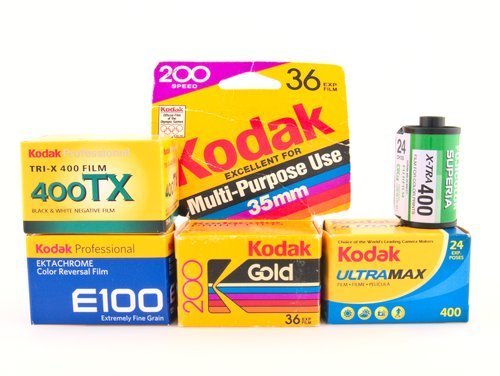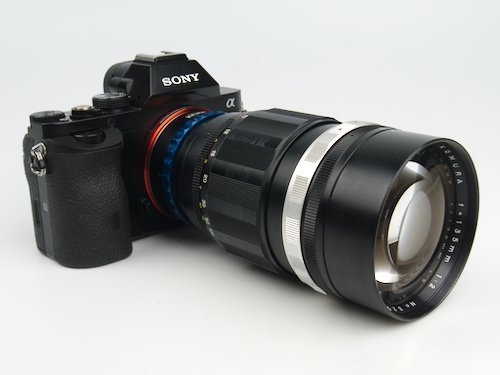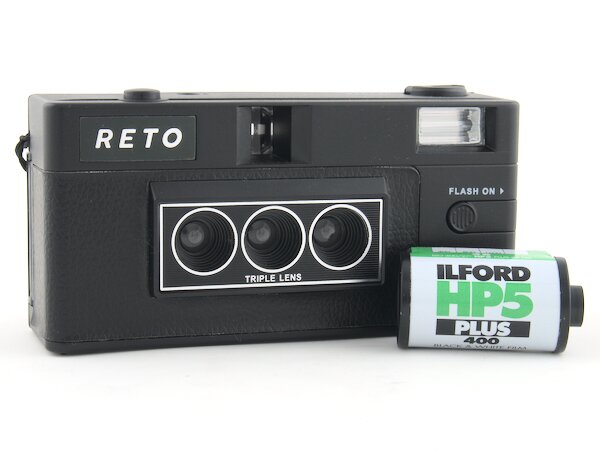
Best Color, B&W & Slide Film for the Olympus OM-2
- Nathaniel Stephan
- Olympus om 2
- May 12, 2020
Table of Contents
The best film to use in your Olympus OM-2 is going to be based on your lens, lighting conditions, and type of film you want to use.
Choosing an ISO 400 35mm or faster will allow you to skip being burdened with a flash or tripod.
If you would like to take images in low light, such as indoors, ensure you have a fast lens. See my list on the 5 Best Lenses for the Olympus OM-2 for lens recommendations.
Color Film
Consumer
https://www.outsidetheshot.com/olympus/film/kodak-ultramax-400.jpg does not existKodak UltraMax 400 - A very good choice for a variety of conditions. Using this film you should be able to handhold the OM-2 in the vast majority of scenarios.
The pictures will have excellent skin tones and is on the warm side.
https://www.outsidetheshot.com/olympus/film/fujifilm-superia-x-tra-400.jpg does not existFujifilm Superia X-TRA ISO 400 - Another option that may have far better availability based on where you are in the world.
Fuji pictures tend to have cooler colors with notable blues and greens, compared to Kodak.
https://www.outsidetheshot.com/olympus/film/lomography-color-800.jpg does not existLomography 800 - If you want an ISO 800 color film, there are not very many offerings. For 35mm film stocks geared towards consumers, Lomography 800 is the single option.
It can also be purchased in the 120 film format, for use in a medium format camera.
https://www.outsidetheshot.com/olympus/film/kodak-gold-200.jpg does not existKodak Gold 200 - A great means to get that mid-80s through 90s look. For the genuine photography experience have a flash.
To bring the ideal look out of the film, you will want to over-expose it by 1 or 2-stops. This will produce the idyllic colors people love Kodak Gold 200 for.
Professional
https://www.outsidetheshot.com/olympus/film/kodak-portra-400.jpg does not existKodak Portra 400 - By far the most popular color negative film among enthusiasts online. Overexpose the film by 1 or 2-stops to get the style the film is known for.
Additionally, ISO 160 and 800 emulsions of Portra. 8x10 sheets, 4x5 sheets, and rolls of 120 film are also easily found.
Black and White Film
Consumer
These film stocks have reasonable prices and excellent quality, making them quite popular to be used in the Olympus OM-2.
The biggest appeal for photography students and budget minded photographers is the very low price. Even if you wouldn’t put yourself in that group, it’s great to have affordable rolls of 35 film on hand for evaluating newly acquired used gear.
https://www.outsidetheshot.com/olympus/film/kentmere-400.jpg does not existKentmere 400 - Produced by Harmon Technology, which is the owner of Ilford. This is notable because that allows this to be the most commonly sold B&W film out of the 3.
https://www.outsidetheshot.com/olympus/film/fomapan-400-action.jpg does not existFoma Fomapan 400 Action - It is less difficult to find in Europe as the film is made by Foma Bohemia in the Czech Republic.
A great film stock to employ for your first few attempts at developing film at home or film photography. Also a good selection if you happen to be looking to check out a camera to check that it’s totally functional.
https://www.outsidetheshot.com/olympus/film/ultrafine-xtreme-400.jpg does not existUltrafine eXtreme 400 - You can get the lowest price by getting it directly from Ultrafine.
If you process color 35mm film at home, you could have done that with developer produced by them.
Professional
The 2 most frequently used black and white film stocks are Ilford HP-5 Plus 400 and Kodak Tri-X 400. While they both do have individual looks, they do have a large amount of qualities that are similar that help makes them so popular.
You can obtain good photographs after pushing both emulsions 2-stops. This makes the film versatile as a roll can be shot at ISO 400, 800, or 1600.
https://www.outsidetheshot.com/olympus/film/ilford-hp5-plus-400.jpg does not existIlford HP5 Plus 400 - The most significant differences are that HP5 Plus has less contrast and is less expensive in comparison to Tri-X. Lower levels of contrast can be helpful because contrast can be adjusted when making a darkroom print or through digital processing.
The film emulsion has subtle grain and still looks very good when pushed 2-stops.
https://www.outsidetheshot.com/olympus/film/kodak-tri-x-400.jpg does not existKodak Tri-X 400 - This film stock features a stronger look to it. To achieve the classic grain structure, contrast, and look of the film, it will need to be developed in Kodak D-76.
The film emulsion without a doubt has considerably more contrast. That is great if that is the look you would you like because it requires not as much work when through digital processing or printmaking.
Slide Film
Reversal film, also known as transparency or slide film, creates a positive image. This means the slides can be exhibited with a light box or projector.
This is different from the more commonly available negative film stocks that create images that require the colors to be inverted for the image to be viewable.
Slide films have less latitude and dynamic range when compared to negative films and so they are viewed as challenging to work with.
https://www.outsidetheshot.com/olympus/film/kodak-ektachrome-e100.jpg does not existKodak Ektachrome 100 - This is a fine grain film known for beautiful skin tones. There’s not any hypersaturation of colors. Ektachrome has been balanced for daylight.
https://www.outsidetheshot.com/olympus/film/fujichrome-velvia-50.jpg does not existFujifilm Velvia 50 - Offers beautiful looking shots that have elevated amounts of contrast and saturation. It is amazingly sharp daylight color balanced film emulsion. Velvia has the top resolving power of any available transparency film.
You can also get it in an ISO 100 version.
https://www.outsidetheshot.com/olympus/film/fujichrome-provia-100f.jpg does not existFujichrome Provia 100F - Offers vibrant and realistic colors with moderate color saturation and contrast. It has ultrafine grain with a daylight color balance.
https://www.outsidetheshot.com/olympus/film/foma-fomapan-r100.jpg does not existFoma Fomapan R100 - This is a black & white reversal film, claimed by Fomapan as having higher contrast, fine grain, and excellent resolving power. It is also mentioned as a replacement for the long discontinued Agfa Scala slide film.
Film Basics
Consumer vs Professional Film
Professional film stock have a greater dynamic range, are easier to push, and increased latitude, which is why pro-film costs more.
You should expect a disparity in supply. Consumer films can oftentimes be seen in pharmacies and big-box stores in limited quantities. Pro film often need to be purchased from a online retailer or specialized camera store.
ISO
A film’s light sensitivity is displayed by the ISO.
The higher the ISO of the film, the less light will be necessary to properly expose a photo. In addition, expect to see larger film grain.
ISO 100 and slower speed films (ISO 50, ISO 25, etc) might be challenging to use handheld with the OM-2. The will likely be longer will take longer than what you could handhold without causing motion blur unless you’re in full sun.
To prevent this you are going to need to use a tripod, a fast lens, and/or a flash. Using a high speed ISO 400 or ISO 800 film often makes the additional equipment unnecessary.
As a quick note, the ISO knob is marked as ASA on the Olympus OM-2. The transition to labeling ISO from ASA (American Standards Association) happened after the creation of the International Standards Organization (ISO).
Latitude
Latitude is the amount of stops a film can be overexposed while still keeping tolerable photographs. Pro film emulsions have a larger latitude to go along with a somewhat higher price.
Negative film has a larger amount of latitude than reversal film. That is one of the reasons why it is perceived as difficult to use.
Dynamic Range
The difference between the brightest and darkest parts of an image is referred to as dynamic range. Parts of an image that fall out of this range will appear as completely white overexposed highlights or solid black underexposed shadows.
A bigger dynamic range is ideal since a larger range helps make shooting in a variety of lighting conditions easier.
- Digital cameras 14+ stops
- Negative film up to 13 stops
- Slide film 6-8 stops
The small dynamic range of reversal film is another reason it’s considered difficult to shoot. A fantastic time to give it a try would be during the golden hour.
Film Type
The Olympus OM-2 takes 35mm film that comes in metal canisters. It is also the most often used type of film and occasionally referred to as 135 film.
120 or 220 film, used in medium format cameras, is the only other film format you are probably going to notice}.
Changing the film stock you are using will alter the look of your shots. This is an example of the marvelous things about film.
DX Coded Film
https://www.outsidetheshot.com/olympus/film/dx-encoding-35mm-film.jpg does not existJust about all new 35mm film manufactured these days has DX encoding on the canister. This makes it possible for cameras to detect and set the ISO when the film is put in the camera.
DX-coding will not change anything for the Olympus OM-2 because ISO needs to be manually selected.
Olympus OM-2 Resources
Where to Get 35mm Film Developed?
You will find a few possible choices for where to have film processed. For a more comprehensive discussion of the possibilities have a look at my guide on Where to Get Film Developed.
WARNING: Film is no longer developed on site at big box stores and pharmacies. They mail film off-site to be processed by a third party. As a result, you won’t get your developed negatives back.
- Develop Film at Home
- Use a Local Photography Lab
- Use a Mail Order Photo Lab
- Pharmacy or Big Box Store
The simplest solution and the method I would suggest doing if you’re just starting to shoot film is to mail your film to a lab to be developed and scanned. A drawback to this is that it will become pricey if you’re consistently using film.
There are a couple of activities that can be done to limit the costs required to shoot film, as long as you’re using a moderate to high volume of film.
Bulk Loading Film
Buying a roll of 100 feet of film and loading in into canisters by hand is one of the most widely used ways to cut costs.
A 100 foot bulk roll of film will fill up about 18 rolls of film with 36 frames each. Expect discounts of 20-30% depending on your choice.
Another thing to keep in mind is that you are limited to 100’ rolls of black & white film. This is in part because black & white film is a lot easier and less expensive to process yourself.
Home Developing and Scanning
You have the ability to process and scan film at home. In fact it is an excellent option to reduce costs so that you can use more film with your Olympus OM-2.
Black and white film is by far the easiest to develop yourself. Chemical temperature and development times are both not as crucial to get correct with black & white film as time and temperatures are for color negative or transparency film.

